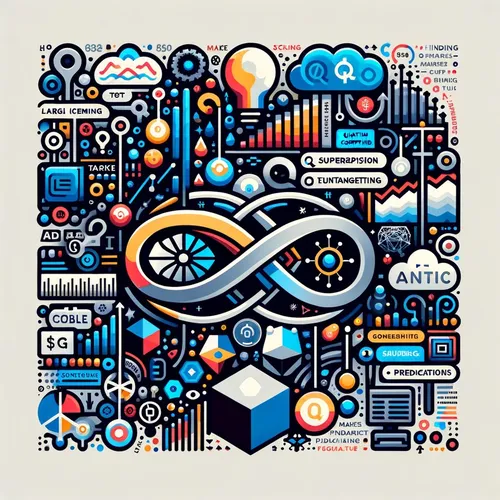Quantum Leaps: Logistics Revolution Unfolds at Port of Rotterdam | Quantum Market Watch
- Author
- Inception Point Ai
- Published
- Tue 29 Apr 2025
- Episode Link
- https://www.spreaker.com/episode/quantum-leaps-logistics-revolution-unfolds-at-port-of-rotterdam-quantum-market-watch--65793535
This is your Quantum Market Watch podcast.
Shhh—do you hear that? That’s not just the hum of cryogenic compressors in a quantum lab, nor the low pop of a photon being generated on a silicon chip. It’s the sound of a sector being reshaped in real time. I’m Leo, your Learning Enhanced Operator, and today on Quantum Market Watch, we’re not waiting for history. We’re living it—right as the freight and logistics industry announces a brand-new quantum computing use case that could redefine the backbone of our supply chains.
Picture this: It’s just after dawn at the sprawling Port of Rotterdam. Tens of thousands of containers, tagged by radio frequency, wait to be routed across continental Europe. For decades, optimizing this labyrinth was a problem so complex that even the world’s fastest classical supercomputers sometimes groaned under its weight. But this very week, a global logistics consortium—backed by IonQ’s cutting-edge quantum processors—unveiled a pilot that uses quantum algorithms to model and dynamically optimize container routing, live. Not in simulation. Not in theory. But in the messy, unpredictable, beautiful real world.
What’s revolutionary here isn’t just the scale—though, trust me, the numbers dazzle. We’re talking millions of permutations, evaluated simultaneously. The true magic is quantum superposition: multiple potential routing solutions explored in parallel, with quantum interference “interrogating” them, collapsing the answer to an optimized path mere seconds later. Think of it as navigating a city where every road is both open and closed until the moment you choose to travel, and now imagine instant perfect traffic.
This pilot draws directly from recent developments confirmed just weeks ago, when IonQ was selected by DARPA for the Quantum Benchmarking Initiative. Their Forte and Forte Enterprise machines aren’t just benchmarks—they’re now proving ground for commercial use, with logistics firms deploying quantum-classical hybrid solutions that exploit quantum’s ability to untangle non-linear, high-dimensional problems. In short: what once took a fleet of servers can now be done on a system cooled near absolute zero, where qubits—those ethereal, spinning coins—dance delicately between ones and zeroes, orchestrated by laser pulses finer than a spider’s silk.
Let’s get technical for a heartbeat. The current problem—dynamic container routing—boils down to what’s classically known as an NP-hard problem. That means complexity grows exponentially with each new container, port, or constraint. But quantum annealing, the approach favored in this week’s announcement, lets us cast the whole system as an energy landscape. Qubits settle towards the lowest energy configuration, beautifully mapping to the best route network. If you’ve ever watched a drop of oil spiral and settle at the bottom of a glass, you already have a metaphor for quantum optimization.
Industry leaders are taking note. Speaking to the European Quantum Industry Consortium, Dr. Anja Müller marveled that, for the first time, we’re seeing global supply chains “becoming more like living networks—self-adapting, resilient, and stunningly efficient, thanks to quantum computing.” Even national agencies are aligning; DARPA’s ongoing benchmarking initiative, with IonQ and companies like Microsoft and PsiQuantum, is sharpening standards so these breakthroughs don’t just remain lab curiosities but become enterprise-grade engines of growth.
The implications are enormous. With dynamic quantum routing, industries can slash emissions by up to 30%, react instantly to disruptions, and even reroute in response to geopolitical events or climate shocks. The future is less about static schedules and more about fluid intelligence—supply chains that think, anticipate, and evolve in real-time.
But here’s what excites me most: This is just the beginning. The logistics quantum leap will...
